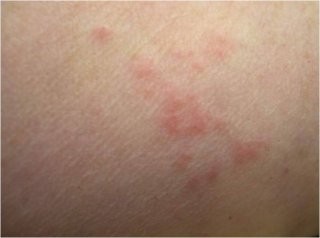Discovering bed bugs early is crucial to prevent a full-blown infestation, saving you time, money, and stress. While dealing with any level of bed bug presence is inconvenient, early detection makes treatment significantly easier and more cost-effective. However, identifying a minor infestation can be tricky, as bed bugs at this stage are fewer and their signs less obvious. It’s also easy to mistake bed bugs for other pests like carpet beetles. Misidentification can lead to delays in proper treatment, allowing bed bugs to spread further within your home or even to other locations. Knowing how to correctly identify bed bugs and their signs is the first step in effective control.
It’s important to understand that relying solely on bites to detect bed bugs is unreliable. Bed bug bites can easily be confused with bites from other insects such as mosquitoes or chiggers. They can also resemble skin rashes like eczema, fungal infections, or hives. Furthermore, not everyone reacts to bed bug bites; some individuals experience no visible symptoms at all. Therefore, a visual inspection for physical evidence of bed bugs is the most accurate method for confirming an infestation.
Identifying Bed Bug Infestation: Look for the Signs
Instead of relying on bites, focus on spotting the physical signs bed bugs leave behind. Be vigilant during routine activities like cleaning, changing bed linens, or when staying in accommodations away from home. Here’s what to look for:
-
Rusty or Reddish Stains on Fabrics: These stains on bed sheets, mattresses, or even clothing are often caused by crushed bed bugs. The blood from their blood meals can leave noticeable marks.
-
Dark Spots (Bed Bug Excrement): Look for small, dark spots, about the size of this bullet point •. This is bed bug excrement, which will smear like a marker if you wet it. These spots are commonly found in clusters.
-
Bed Bug Eggs and Eggshells: Bed bug eggs and shed skins are tiny, approximately 1mm in size. Eggs are pale yellow and you might find translucent shed skins (eggshells) as the nymphs grow and molt.
-
Live Bed Bugs: While more challenging to spot in early infestations, seeing live bed bugs is definitive proof. Adult bed bugs are reddish-brown, wingless, and about the size and shape of an apple seed. Nymphs are smaller and lighter in color.
Alt text: Close-up of a person’s arm showing multiple red and swollen bed bug bites, indicating a possible infestation.
Alt text: Detailed view of dried blood stains on a fabric chair, a key indicator of bed bug activity.
Bed Bug Hiding Spots: Where to Inspect
When bed bugs are not feeding, they seek shelter in various hidden locations. Focus your search, especially initially, around the bed area as this is where they have easy access to their host – you. Check these areas near the bed:
-
Mattress and Box Spring Seams and Tags: Carefully inspect the piping, seams, and tags of your mattress and box spring. These provide ideal crevices for bed bugs to hide.
-
Bed Frame and Headboard Cracks: Examine all cracks and joints in the bed frame and headboard. Bed bugs can squeeze into very narrow spaces.
If the infestation is more established or has spread, expand your search to other areas in the room and even adjacent rooms:
-
Upholstered Furniture Seams and Cushions: Check the seams of chairs and couches, paying close attention to between cushions and in any folds of fabric.
-
Curtain Folds: Inspect the folds and seams of curtains, especially near the bed area.
-
Drawer Joints: Look inside and around drawer joints in bedroom furniture like nightstands and dressers.
-
Electrical Outlets and Appliances: Bed bugs can hide behind electrical receptacles and within appliances. Exercise caution when inspecting electrical areas.
-
Under Loose Wallpaper and Wall Hangings: Check behind loose wallpaper and any wall-mounted decorations or picture frames.
-
Wall-Ceiling Junctions: Inspect the area where the wall meets the ceiling for signs of bed bugs.
-
Screw Heads: Incredibly, bed bugs can even hide in the head of a screw in furniture.
Remember, bed bugs are remarkably flat and can fit into incredibly small spaces – any crack or crevice that can accommodate a credit card is a potential hiding spot.
Alt text: Infestation evidence on a box spring strap, showing adult bed bugs, shed skins, fecal matter, and eggs, highlighting typical hiding places.
Alt text: Magnified view of bed bug eggs attached to cardboard, illustrating their small size, pale color, and clustered nature.
Alt text: Bed bugs clustered along the edge of a window frame, demonstrating their ability to hide in various cracks and crevices around a room.
Alt text: Bed bugs hiding along the bottom edge of an electrical outlet, emphasizing the need to check less obvious and potentially hazardous locations.
Bed Bug Behavior: Understanding Their Habits Aids Detection
Understanding bed bug behavior patterns – their feeding habits, life cycle, and preferred conditions – is invaluable for both early detection and post-treatment monitoring.
Feeding Habits:
-
Host Preference: Bed bugs primarily prefer human blood but will feed on other mammals and birds if necessary.
-
Feeding Range: They typically travel 5-20 feet from their hiding places to feed on a host.
-
Activity Timing: While mainly nocturnal, hungry bed bugs will seek out hosts even in daylight.
-
Feeding Duration: A single feeding can last from 3 to 12 minutes.
-
Blood Meal Residue: The rusty or dark spots you find are partly due to bed bugs sometimes voiding remnants of previous blood meals while they are still feeding. This explains blood spots even without crushing them.
Life Cycle and Reproduction:
-
Blood Meal Requirement: Bed bugs need at least one blood meal to progress to each of their six life stages (including nymph stages to adult). They can and often do feed multiple times at each stage. Molting (shedding skin) is also required at each stage.
-
Reproduction Cycle: To mate and lay eggs, both male and female bed bugs must feed at least every 14 days.
-
Egg Laying: A female bed bug can lay 1 to 3 eggs per day and can produce 200-500 eggs in her lifetime, which ranges from 6-12 months, or potentially longer.
-
Life Cycle Speed: Under favorable conditions, the entire egg-to-egg life cycle can take just four to five weeks, allowing for rapid infestation growth.
Living Conditions:
-
Temperature Tolerance: Bed bugs can survive and remain active in temperatures as low as 7°C (46°F). However, they die when their body temperature reaches 45°C (113°F). Heat treatments for bed bugs require even higher temperatures to ensure lethal heat penetrates their hiding places effectively.
-
Habitat Range: Common bed bugs (Cimex lectularius) are found globally, wherever humans live.
-
Tropical Bed Bugs: Tropical bed bugs (Cimex hemipterus) are more common in tropical and subtropical climates and require warmer average temperatures than common bed bugs.
By diligently looking for the signs described and understanding bed bug behavior, you can significantly increase your chances of finding bed bugs early and taking prompt action to eliminate them. Early detection is key to successful and less invasive bed bug control.

